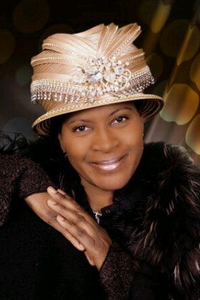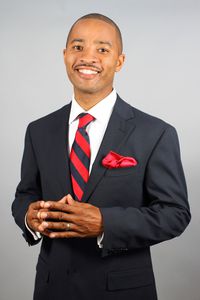Steve Simon
The 2022 Democratic primary election for Minnesota Secretary of State pitted incumbent Steve Simon against challenger Steve Carlson. Simon ultimately defeated Carlson by a significant margin, taking 72.5% of the vote to Carlson’s 27.5%.
The race provided an interesting case study in how an establishment Democratic incumbent with many structural advantages was able to fend off a progressive primary challenger. Examining the background, positions, and campaigns of both candidates can provide insights into Democratic politics in Minnesota.
Background on Steve Simon
Early Life and Education
Steve Simon was born in 1972 in New Rochelle, New York. He graduated from Tufts University in 1992 with a bachelor’s degree in political science. Simon then attended the University of Minnesota Law School, earning his J.D. in 1996.
Early Political Career
After working as a lawyer, Simon transitioned into politics. He served in the Minnesota House of Representatives from 2005 to 2015, representing a suburban district. Simon was elected Assistant Majority Leader during his House tenure.
Election as Secretary of State
In 2014, Simon ran for Minnesota Secretary of State and won his first term. As Secretary of State, he focused on expanding voting access through policies like online registration, early voting, and restoring voting rights.
Simon was re-elected as Secretary of State in 2018. He positioned himself as a national leader in opposing restrictive voting laws.
Positions and Policies as Secretary of State
As Secretary of State, Simon has advocated for expanding mail and early voting. He promotes automatic voter registration based on driver’s license data.
Simon refused to provide Minnesota voter data to President Trump’s voter fraud commission in 2017, citing privacy concerns. He has consistently opposed voter ID laws.
Background on Steve Carlson
Early Life and Education
Steve Carlson was born in Cloquet, Minnesota in 1966. He earned a bachelor’s degree in communications from the University of Minnesota Duluth in 1992.
Entry into Politics
Carlson first ran for office in 2020, challenging incumbent Democrat Rick Nolan for a seat on the St. Louis County Board of Commissioners. Carlson lost this race.
In 2022, Carlson launched a primary challenge to Secretary of State Steve Simon. This marked his first statewide race.
Positions and Policies
Carlson called for universal automatic voter registration at age 18. He supported ranked choice voting and opposed voter ID laws.
Carlson ran to Simon’s left, backing policies like repealing the state’s felony disenfranchisement law and restoring voting rights to people on parole or probation.
Simon vs Carlson in 2022 Democratic Primary
Reasons for Carlson’s Challenge
Carlson argued that Simon was not doing enough to expand access and turnout. He sought to bring a more progressive perspective to the Secretary of State’s office.
Key Policy Differences
The two candidates differed most significantly on efforts to re-enfranchise felons. Carlson also placed more emphasis on enacting ranked choice voting.
Campaign Tactics and Strategies
Simon touted his experience and record as Secretary of State. Carlson portrayed himself as the bold progressive choice. Both candidates pledged to fight voter suppression.
Carlson struggled to gain name recognition and traction outside the Twin Cities metropolitan area. Simon secured support from prominent Minnesota Democrats.
Primary Election Results
In the August 9 primary, Simon defeated Carlson decisively, 72.5% to 27.5%. Simon performed well throughout the state, even carrying Carlson’s home county.
Analysis of Reasons for Simon’s Victory
Name Recognition and Incumbency Advantage
As the incumbent Secretary of State, Simon enjoyed much higher name recognition statewide. Many voters were satisfied with the job he was doing.
Fundraising Disparity
Simon raised over $1.5 million, while Carlson brought in around $200,000. Simon used his funding advantage for TV ads and mailers.
Democratic Party Support
Simon won endorsements from Democratic leaders like Governor Tim Walz. The state party apparatus aided Simon’s well-funded turnout operation.
Implications for the General Election
Carlson’s Third Party Bid
After losing the primary, Carlson continued his campaign as an independent write-in candidate in the general election. He did not pose a serious threat to Simon.
Competitiveness of Race
Despite Minnesota trending competitive, Simon maintained an advantage over Republican Kim Crockett in the general election. Simon won re-election handily with 54.5% of the vote.
Conclusion
Key Takeaways
Simon’s resounding primary victory demonstrated the difficulty of challenging an experienced Democratic incumbent with establishment backing. Carlson struggled to gain traction despite running to the left.
What’s Next for Both Candidates
Simon begins his third term as Secretary of State. His strong performance positions him well for potential future statewide bids.
Carlson faces long odds in continuing his grassroots progressive campaign. This race marked his emergence, but significant hurdles remain moving forward.
FAQs
What margin did Steve Simon defeat Steve Carlson by?
Simon defeated Carlson by 45.1 percentage points, 72.5% to 27.5%
How much money did each candidate raise?
Simon raised over $1.5 million while Carlson raised around $200,000.
Where did Steve Carlson perform best?
Carlson’s best county was Ramsey County (St. Paul), where he got 39% of the vote. But he lost his home county of St. Louis decisively.
Did Steve Carlson run in the general election?
Yes, Carlson continued his campaign as an independent write-in candidate but got just 0.0% of the vote.
Who did Steve Simon face in the general election?
Simon faced Republican nominee Kim Crockett in the November general election and defeated her 54.5% to 45.4%.







